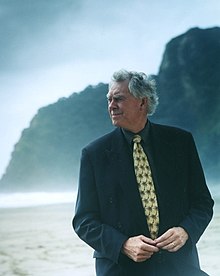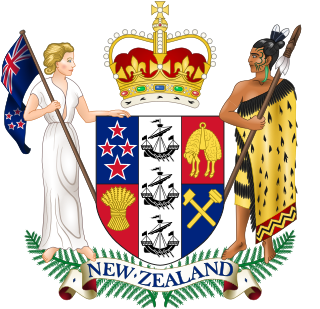
Territorial authorities are the second tier of local government in New Zealand,below regional councils. There are 67 territorial authorities:13 city councils,53 district councils and the Chatham Islands Council. District councils serve a combination of rural and urban communities,while city councils administer the larger urban areas. Five territorial authorities also perform the functions of a regional council and thus are unitary authorities. The Chatham Islands Council is a sui generis territorial authority that is similar to a unitary authority.
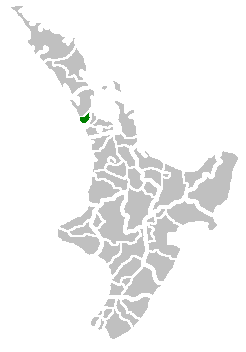
Waitākere City was a territorial authority in West Auckland,New Zealand;it was governed by the Waitākere City Council from 1989 to 2010. It was New Zealand's fifth-largest city,with an annual growth of about 2%. In 2010 the council was amalgamated with the other authorities of the Auckland Region to form the current Auckland Council.
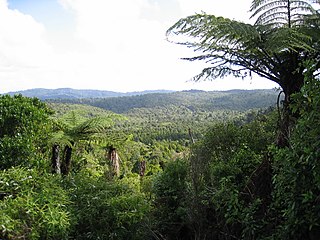
The Waitākere Ranges is a mountain range in New Zealand. Located in West Auckland between metropolitan Auckland and the Tasman Sea,the ranges and its foothills and coasts comprise some 27,720 hectares of public and private land. The area,traditionally known to Māori as Te Wao Nui o Tiriwa,is of local,regional,and national significance. The Waitākere Ranges includes a chain of hills in the Auckland Region,generally running approximately 25 kilometres (16 mi) from north to south,25 km west of central Auckland. The ranges are part of the Waitākere Ranges Regional Park.

Piha is a coastal settlement in West Auckland,on the western coast of the Auckland Region in New Zealand. It is one of the most popular beaches in the area and a major day-trip destination for Aucklanders throughout the year,and especially in summer.
Westie,or Westy,is slang in Australian and New Zealand English for residents of the Greater Western Sydney,the western suburbs of Melbourne,or the western suburbs of Auckland,New Zealand.

Sir Timothy Richard Shadbolt is a New Zealand politician. He was the Mayor of Invercargill from 1998 to 2022,and previously Mayor of Waitemata City.

Te AtatūSouth is a residential suburb in West Auckland,New Zealand. Its location allows the suburb easy access to the city and Henderson town centre. Its elevation allows views back on to the city and Waitākere Ranges. Situated on the Te AtatūPeninsula,it has coasts backing on to water on its eastern and western sides with walkways and cycleways on both sides.
Waitemata City was a New Zealand city in the greater Auckland area. It was formed in 1974 from the western part of the old Waitemata County,with both the County and City taking their names from Waitemata Harbour. In 1989,when New Zealand local government bodies underwent a major re-organisation,Waitemata City joined with its southern neighbours,the boroughs of Henderson,Glen Eden,and New Lynn,to form the modern city of Waitakere.
The following lists events that happened during 1941 in New Zealand.
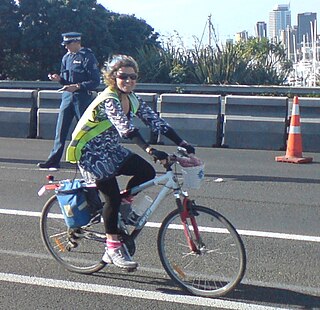
Christine Rose is a New Zealand environmental advocate,a former Councillor and Deputy Chair of the Auckland Regional Council. She is an artist and writer.
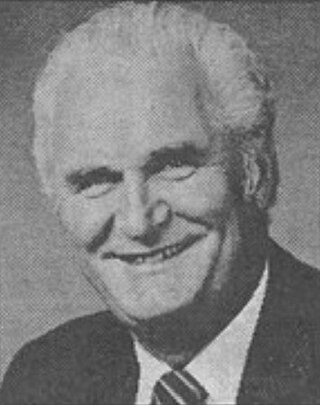
Sir James Belich was a New Zealand local politician. He was the mayor of Wellington from 1986 to 1992.

Sir Edward Michael Coulson Fowler was a New Zealand architect and author who served as mayor of Wellington from 1974 to 1983.

Auckland Council is the local government council for the Auckland Region in New Zealand. It is a territorial authority that has the responsibilities,duties and powers of a regional council and so is a unitary authority,according to the Local Government Act 2009,which established the council. The governing body consists of a mayor and 20 councillors,elected from 13 wards. There are also 149 members of 21 local boards who make decisions on matters local to their communities. It is the largest council in Oceania,with a $3 billion annual budget,$29 billion of ratepayer equity,and 9,870 full-time staff as of 30 June 2016. The council began operating on 1 November 2010,combining the functions of the previous regional council and the region's seven city and district councils into one "super council" or "super city".
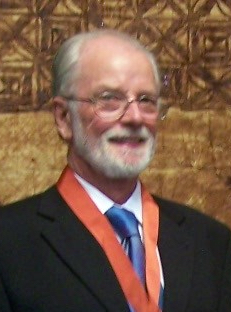
Sir Peter Graham Siddell was a New Zealand artist.
The Mayor of Waitakere City was the head of the former municipal government of Waitakere City,New Zealand,who presided over the Waitakere City Council. The city was New Zealand's fifth largest,and was part of the Auckland region. There were only two mayors of Waitakere City:Assid Corban,1989–92;and Bob Harvey,1992–2010. On 1 November 2010,Waitakere City became a part of the Auckland Council.
Assid Khaleel Corban was a New Zealand local-body politician and company director. He was the first Mayor of Waitakere City and previously Mayor of the Henderson Borough Council.

Penelope Anne Hulse is a New Zealand politician,and was Deputy Mayor of Auckland from the formation of the Auckland Council Super City until 2016. She continues to represent the Waitākere Ward on the Auckland Council and is Chair of the Environment and Community Committee.

Eke Panuku Development Auckland is one of four council-controlled organisations (CCOs) of Auckland Council in Auckland,New Zealand. Eke Panuku manages a NZD$2.3bn property portfolio of non-core Auckland Council assets.
John Stanley Edgar was a New Zealand sculptor and medallist.

West Auckland is one of the major geographical areas of Auckland,the largest city in New Zealand. Much of the area is dominated by the Waitākere Ranges,the eastern slopes of the Miocene era Waitākere volcano which was upraised from the ocean floor,and now one of the largest regional parks in New Zealand. The metropolitan area of West Auckland developed between the Waitākere Ranges to the west and the upper reaches of the WaitematāHarbour to the east. It covers areas such as Glen Eden,Henderson,Massey and New Lynn.
